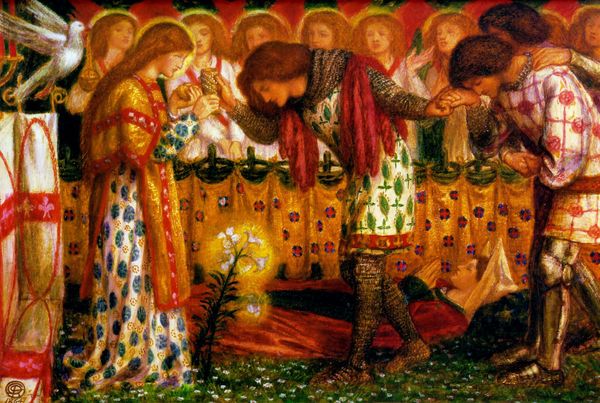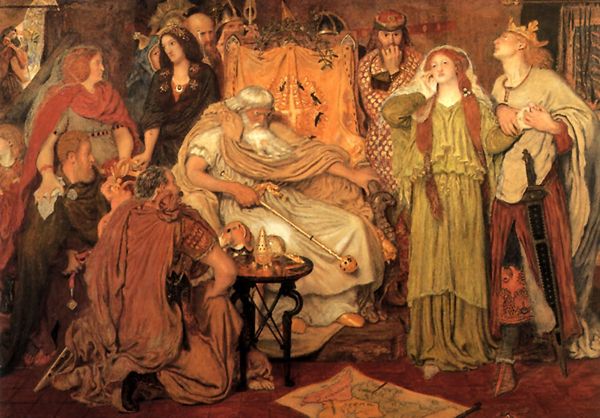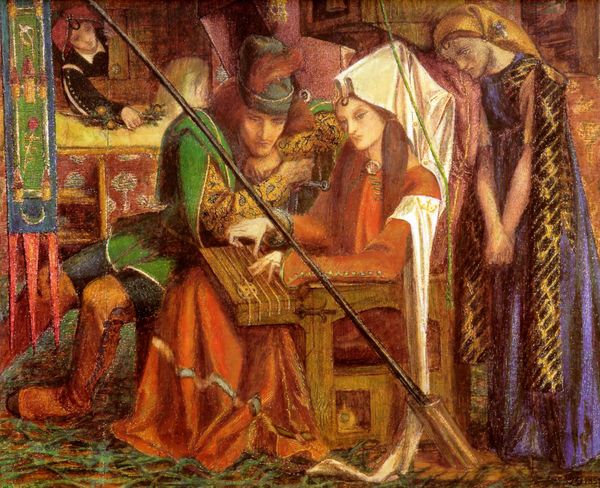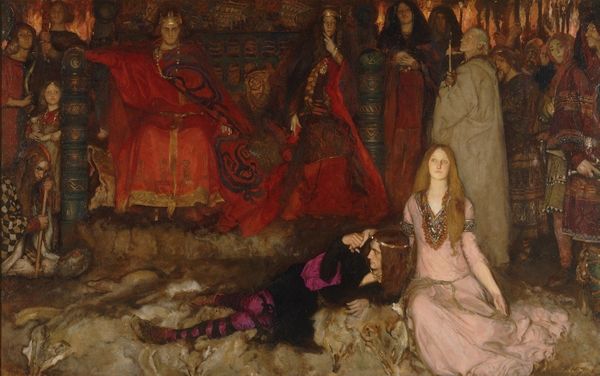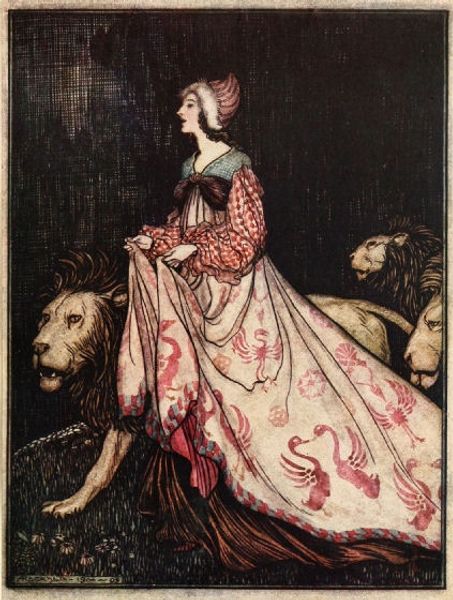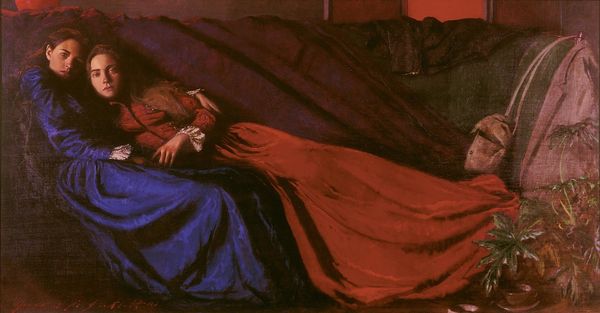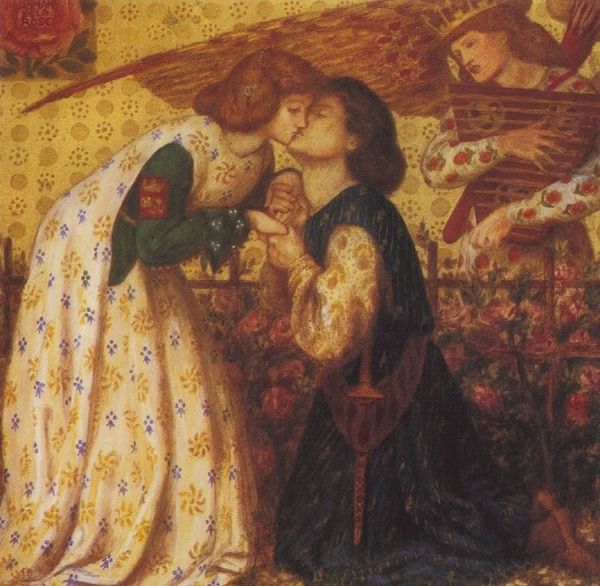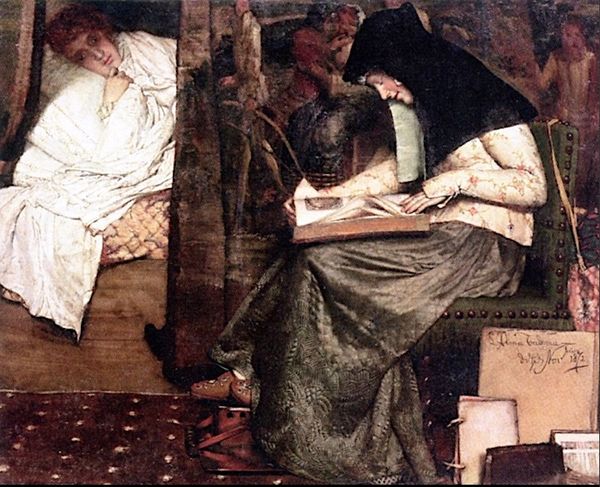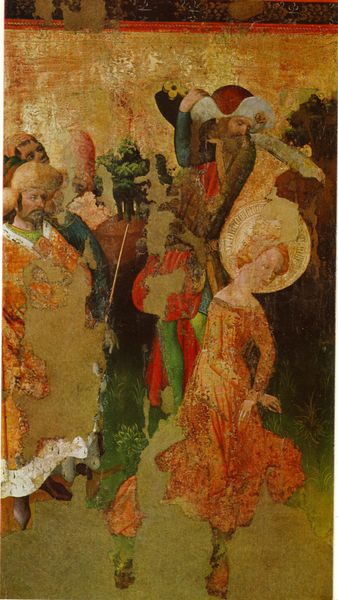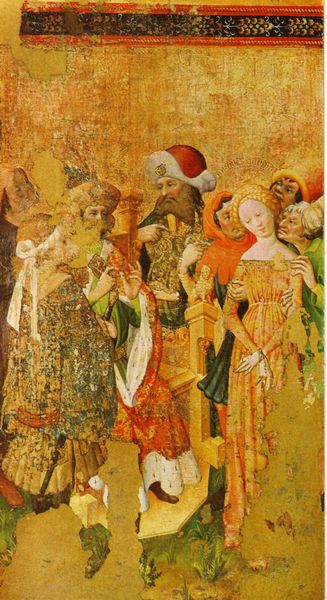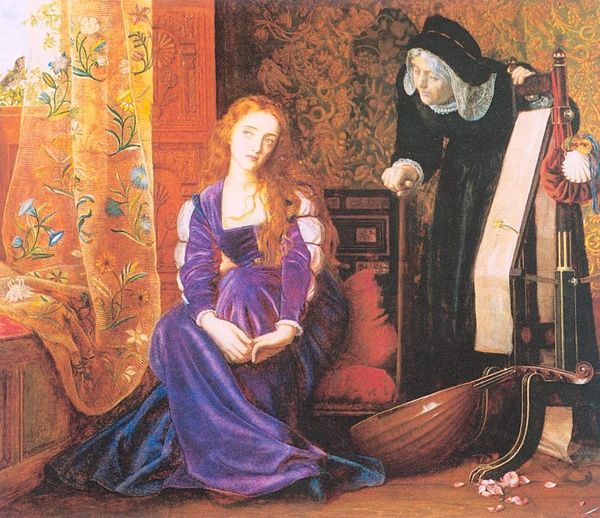
Copyright: Public domain
Curator: "The Pale Complexion of True Love," painted in 1899 by Eleanor Fortescue-Brickdale, presents a tableau of love and devotion rendered in oil with meticulous detail characteristic of the Pre-Raphaelites. Editor: Immediately, I’m struck by the power dynamics on display here. There's a tension created by the man kneeling, almost prostrate, before this ethereal, almost untouchable, woman. The subdued tones in contrast with her radiant presence speaks volumes. Curator: It’s fascinating how she evokes such a mood through symbolism. The positioning of the birds, for instance – the way they turn their backs, indifferent to the exchange. And what are your thoughts about the symbolic implications of the white petals on the floor, strewn around this man who loves from below? Editor: It's striking to witness a subversion of agency—or perhaps more aptly, a clear reinforcement of patriarchal social norms under the guise of "courtly love." He's literally at her feet amidst discarded blossoms of youthful love while she seems caught between duty and emotion. She appears so pale, her gaze averted, holding prayer beads, almost like a medieval Madonna caught in the present. Curator: Interesting insight on her posture as reflecting Madonna imagery! It aligns with Fortescue-Brickdale’s interest in imbuing her works with narrative weight. Her careful use of symbolism adds layers of meaning—we’re invited to question what “true love” truly means within a structured, almost suffocating, social context. The tension between spiritual love, embodied in the rosary beads, and earthly devotion, reflected by his devotion is potent, too. Editor: Yes, the weight of societal expectations is almost palpable. True love seems to require this extreme act of self-abasement from him, a very imbalanced presentation of desire. You know, viewing this with contemporary eyes, especially through a feminist lens, unveils some problematic narratives about women’s role in defining romantic relationships. Curator: Your socio-political interpretation gives the painting a modern urgency. As you rightly note, these representations tell more than the subject alone; these visual depictions continue to permeate societal norms. Editor: Indeed, these works reinforce—even as they seek to define—the performance of courtship in unequal societies. I hadn’t quite anticipated how relevant its visual cues remain. Curator: It truly makes me reconsider how the idea of “true love” as an absolute ideal has come down to us. Editor: For me too. Context is key to the artist's visual language; let’s not take its language at face value.
Comments
No comments
Be the first to comment and join the conversation on the ultimate creative platform.
